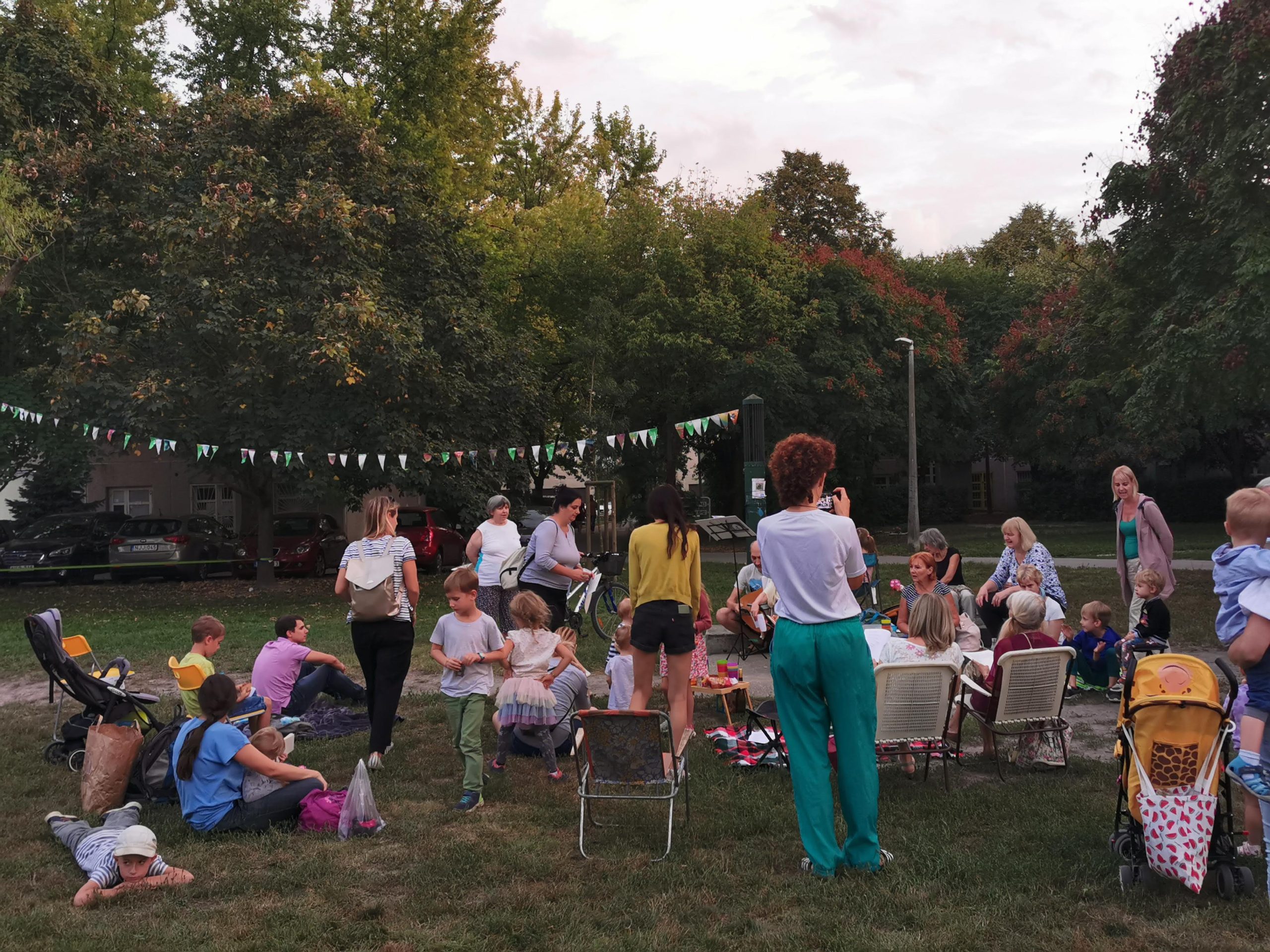Miutcánk, or “Our Street” in English, is a Hungarian digital platform designed to help urban residents share tools, resources, and local services. The idea was born when the founders, after moving into new rental apartments, realized they didn’t know their neighbours—something they had taken for granted in more connected communities. Starting with tool-sharing, Miutcánk has expanded to allow users to offer and request help for everything from childcare to small repairs. The platform is now engaged in partnerships with local municipalities, using public opinion surveys and community engagement to improve local services. In a society where distrust often holds back neighbourly connections, Miutcánk is building trust through shared resources and a focus on local engagement.
There are several layers to this. One key part comes from my personal experience. I’ve always been drawn to projects where people with diverse skills come together to accomplish something meaningful. Before Miutcánk, I organized community events that encouraged people to collaborate and engage with one another in the city. For instance, we even created a community library in the Móricz underpass in Budapest. This mindset—that people should work together—has always been central to how I think.
The idea for Miutcánk, however, started when some of our team members and I had just finished university. I had recently moved into my first rental apartment and quickly realized that I didn’t know anyone in my new neighbourhood. Growing up, I lived with my parents, and it was normal for us to rely on our neighbours—whether it was sharing a lawnmower with multiple families or having spare keys to each other’s homes. Dávid had a similar experience, growing up in a multigenerational household with constant foot traffic.
What inspired you to launch Miutcánk, and how has the idea developed over the years?
That’s when it hit us: in cities, we don’t really know our neighbours. We don’t know who lives nearby, and we certainly don’t know who to turn to for help. But we realized that within a single city block, we could likely solve just about any problem. There’s probably an English teacher on the same block, so why go farther? Or maybe someone has a ladder, a car seat, or tools you need.
From that realization, we set two goals: to share resources like tools or household items and create a social network—essentially, a system of relationships. We wanted to build a community where, instead of simply walking up to the third floor and not knowing a single person, we could engage with actual neighbours, fostering a life that extends beyond the four walls of our flat.
Was there an existing platform or initiative that inspired you?
At first, we truly believed it was our own idea. But after a few weeks or months, we discovered that similar initiatives had launched around the same time. This was about ten years ago. One of the biggest examples is Nextdoor in the U.S., which started perhaps a year before us. Then there’s Peerby in the Netherlands, which focused more on tool-sharing and less on community-building. Eventually, they shifted to a rental business model, somewhat like Airbnb but for tools. There were others too—Fragnebenan in Austria and Germany, and “Do You Have Sugar?” in Brazil. We initially thought we had invented the concept, but soon realized that similar ideas pop up regularly—probably every year. However, the timing felt just right when we launched, partly due to the spread of the internet. We were able to catch the momentum at the right moment. By then, a lot of people had smartphones, and we were thinking: how do you recreate the old “knock-on-the-door” feeling with digital tools? We thought this could really work.
Can you explain how the Miutcánk platform works?
It’s really simple. You go to the website or the app—they’re basically the same—enter your address, and we store your location just as coordinates. Then, you can see people within a 10-minute walking distance. It’s like everyone has a megaphone that reaches the neighbourhood. There are no districts or blocks—you just see your local area. People very close to you will see mostly the same things; people farther away have partial overlaps. There’s a message board where you can post anything. You can see your neighbours, who is active, how far they live. You can list your interests, what tools others can borrow from you, things like chairs, balls, whatever.
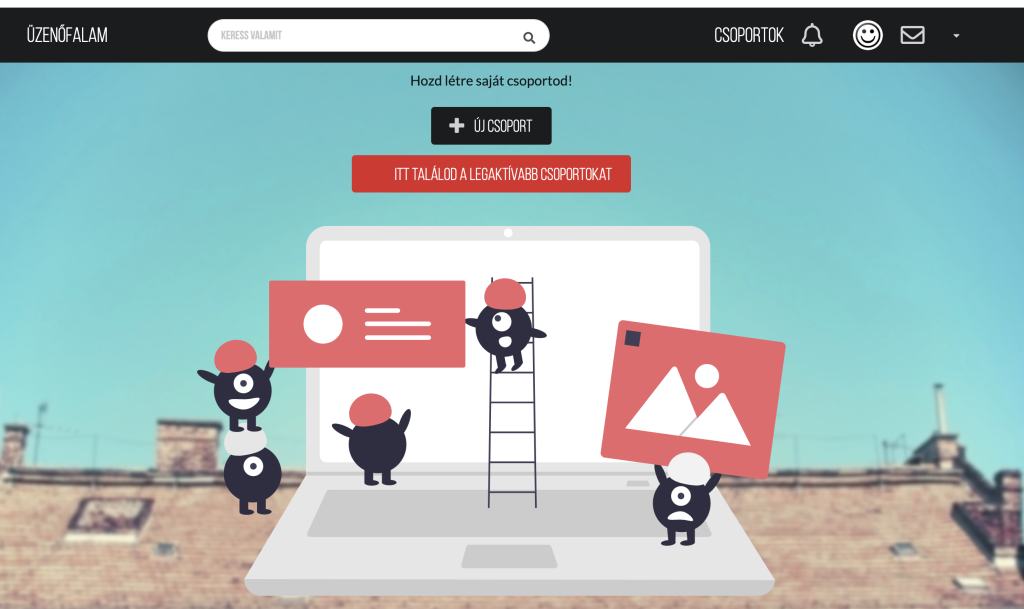
We later added the option to say what kind of help neighbours can count on you for—like basic electrical repairs. And we added a structured borrowing request form, so you can specify: I need a stopwatch starting Sunday for three days. You can also leave feedback, rate with stars, leave short comments. Though rating neighbours is tricky, since it’s not a service-provider relationship. Still, we think it helps build trust. One of the big challenges is this: if I only see “Anna, 450 meters away,” why should I trust her if I’m not super open to begin with?
How has Miutcánk evolved over the years to build stronger connections between people?
Over time, Miutcánk has become more than just a tool for connecting people. Initially, it was about bringing people together in the same neighbourhood, but we quickly realized we could do more. We added features to let people share their interests and, eventually, their activities related to pets. I think pets are a particularly strong connection point. If you think about it, people meet others while walking dogs or through other pet-related activities. Even though I’ve never had a dog myself, I see how they are the ones who spend the most time outside, creating natural opportunities for interaction. One of the best stories that came up was when someone posted they were scared to walk home late at night. Another user with a big dog offered to walk her home. This kind of connection shows the power of simple interactions in creating a stronger sense of community.
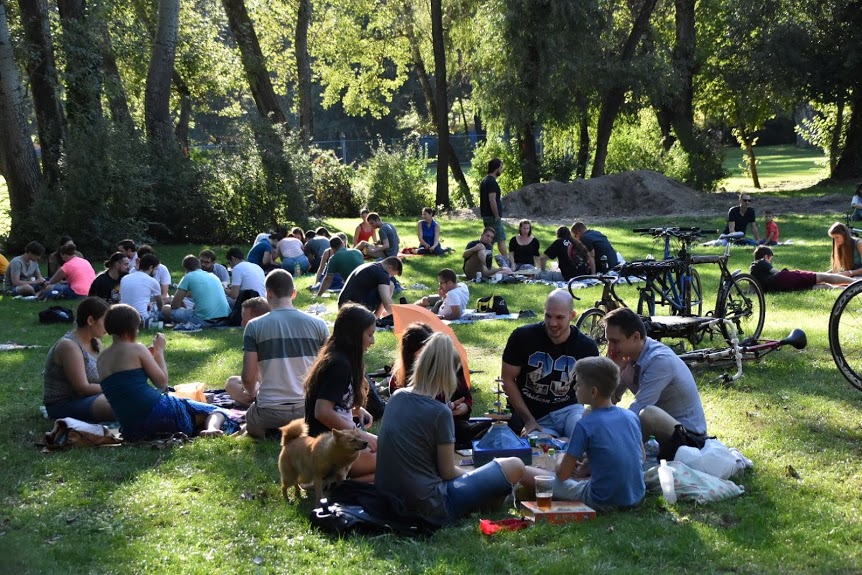
How has Miutcánk evolved over the past 10 years to build and strengthen trust within local communities?
About five years ago, we began asking ourselves, “What else belongs to the neighbourhood?” Beyond people, tools, and interests, we realized that building trust was essential. That’s when we reached out to local governments. The people on Miutcánk are more locally engaged than the average person, and by knowing where they live, we could deliver local news directly to those who are most affected. This helps build trust because it shows that we’re not just connecting neighbours for the sake of it, but also providing valuable, real-time information. It’s not just about simple exchanges like, “Who has a power strip?” or “Which GP do you trust?” People also ask questions about local issues, like “Why isn’t there a bike rack in front of my building?” or “When will the road construction finish?” These questions foster trust, as they show that residents can voice concerns and get answers. For municipalities, this type of feedback is critical. It’s not just about communication; it’s about empowering residents to engage in decisions that affect their everyday lives, creating a more connected, trustworthy community.
How has Miutcánk evolved over the past 10 years to build and strengthen trust within local communities?
We took the initiative and reached out to them. I’ve always been interested in what can be done within cities and for civic matters. So, we put together an extensive list of what we could offer and what we believed municipalities might need. We started by speaking with a few friends working in public administration, then expanded to district governments. This led to the development of three main services. One of those is public opinion surveys. The timing was perfect—we started around the onset of COVID, just when it became difficult to conduct street surveys. But through Miutcánk, we were able to quickly and affordably gather high-quality data from our users. While we now use other channels, this data remains a solid and reliable base. We know basic demographics—where people live, their age, and gender. This allows us to filter out any biases, like overrepresentation from specific groups, such as dog lovers. So, the surveys became a valuable service. Another service we’ve developed is local news.
How do you conduct the surveys on the platform, and what types of topics do they cover?
he surveys appear on the site and are sent via direct message and email with a set deadline. It’s a simple click-to-fill format. Over the years, local governments have become more engaged—what started as a formality has evolved into a genuine interest in public opinion. The topics vary widely; some are straightforward, like asking if a new park should have a slide or public toilet, while others are more strategic, like how people perceive Batthyány Square—whether as a transport hub, meeting spot, or market. We’ve also surveyed residents on green programs and social services, helping municipalities raise awareness for initiatives that might otherwise remain invisible. Our goal is to create materials that help inform decisions and improve local communication.
Can you explain how your business model was designed and how it’s evolved over time, particularly with municipalities being an important part of it?
Well, ten years ago, we were caught up in that startup hype—the “pump and dump” mindset. We thought we just needed to get a ton of users, raise a bunch of money, and everything would fall into place. But… we didn’t get a ton of users. Honestly, while that model might work in the U.S.—like with Nextdoor, which had no real revenue or business model for years—it wasn’t realistic for us. In the beginning, we didn’t focus on business models at all. Then we thought maybe we could use local ads from neighbourhood businesses. But that didn’t work. Two things became clear: first, the average transaction value at local businesses is very small, so it took a lot of effort for little return. And second, our user numbers were too low to attract larger advertisers or ad networks. We have about 60,000 users now, which is good, but not enough to be a serious ad platform. We did try some targeted ad collaborations—like for home insurance—but the user feedback wasn’t great, and we didn’t like it either.
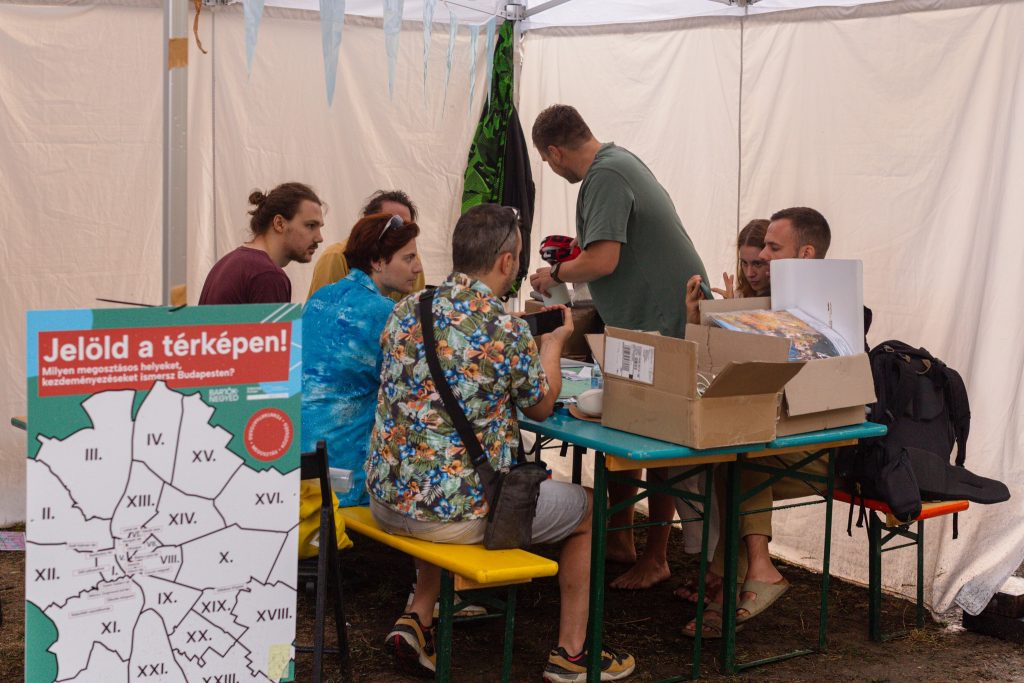
Miutcánk is a business, but it’s also idealistic. We don’t want to include anything we wouldn’t want to see ourselves. Financially we can afford it because everyone on the team has other income. We wrote business plans for things like transaction-based services, like adding insurance for lending tools. But those ideas never made it to execution. Right now, municipalities have been our only revenue source for quite a while. Interestingly, there’s a company in the Netherlands or Belgium doing something almost identical to us. They’ve gone through a similar evolution and now focus solely on local governments. They’re ahead of us in many ways—they have more users and a bigger team—but we’ve talked with them, and it’s clear this model is the stable one. It’s value-based—everyone benefits: we provide value to city leadership, and what comes from city leadership is valuable to residents. It creates a positive feedback loop.
What types of users are most active on Miutcánk, and what motivates them to connect with their neighbourhoods?
Specific life stages, like when someone is building their first home or moving into a new apartment, make people more motivated to connect with their neighbourhood. Another active group is women over 50. Many have more time now that their children have grown, and it’s harder to make new connections at that stage in life. They tend to prefer groups like dog-walking groups or help groups. They really enjoy helping others. It’s something we’ve seen often—people want to help but struggle to find the right channel for it. The difficulty isn’t offering help; it’s asking for it. If someone needs a power strip, they might feel embarrassed, but if someone offers one, they feel like the hero.
There’s huge potential for that on Miutcánk. We’ve started gathering information about whether users have kids, but we need to expand on that—like how old the kids are. Then we could suggest, “There’s someone 200 meters away with a child the same age—maybe you could go to the playground together?”
Density matters too. In areas where we’re strongest, we have around 6–8% of residents registered—that’s a significant number. In other areas, typically only 2–3% of residents are registered. This higher density makes questions more likely to get answered. It creates a ripple effect: when someone posts, others respond, and then someone else posts. It keeps the activity dynamic. So, higher density leads to more engagement. It’s like splashing water—if I start a wave, it bounces back, and it keeps rippling. The more people there are, the more dynamic it gets because someone always posts something, and then it sparks others to engage.
At the same time the platform works well not just because of population density, but also because of the different life stages people are in. The 25-40 age group, for example, is highly active, driven by practical needs such as finding a good general practitioner or paediatrician, and also by social needs like looking for a running partner or borrowing a power drill. Older and middle-aged users tend to engage more with requests for help. For example, someone might need assistance with a large plant that has outgrown its space or someone offering to take care of a dog while its owner is away. There are also heartwarming requests, like the “substitute grandma” idea, where divorced parents without nearby family members might seek help from an older neighbour to pick up their kids once a week.
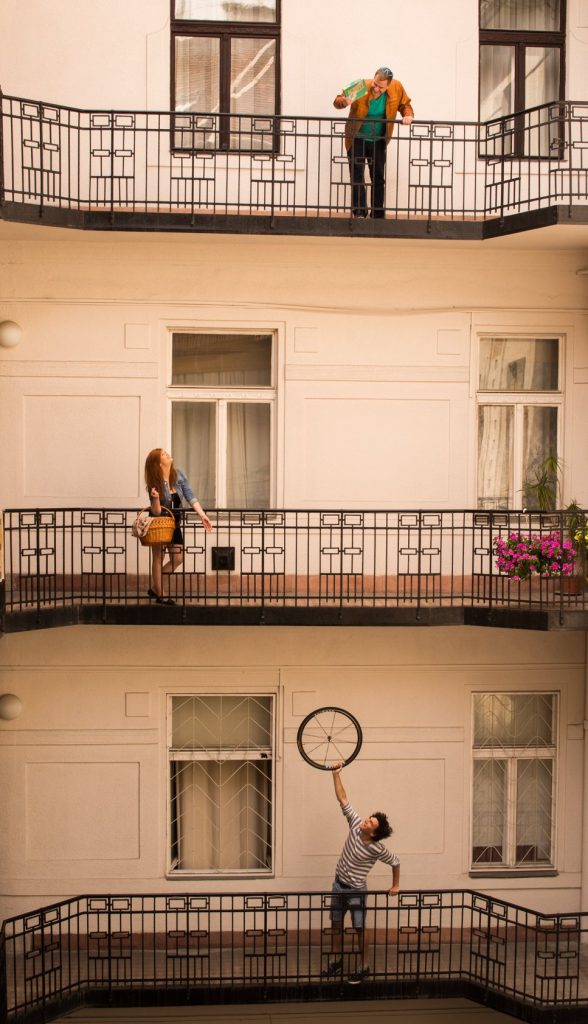
Given the stereotype that Hungarians are distrustful, do you think the 60,000 users Miutcánk has gained so far suggests people are more open than initially thought?
Reaching 60,000 users is a significant milestone, especially considering the cultural stereotype of distrust. When we first started, I expected our user base to grow more quickly, but this achievement still feels meaningful. While it’s true that people in Hungary—like anywhere else—want change, encouraging them to take action is more challenging. There’s often hesitation to initiate, even when people express a need. For example, someone travelled from Csepel to the second district just to participate in an interview about missing partners to play cards with. When we asked why they hadn’t posted about it on the platform, they admitted they expected someone else to reach out to them. This reluctance to make the first move is common, not just in Hungary but in human nature in general.
How does the exchange of tools play into the platform’s success? Is the tool-sharing element the core of the platform, or is there more to it?
Tool-sharing is certainly an important aspect, but it’s not the only thing that drives the platform. The real value lies in the experience of connecting with someone in your community. For example, borrowing a power drill is a practical solution, but the experience of meeting someone, exchanging the tool, and building a rapport is what makes the platform unique. There’s an element of surprise, unpredictability, and human connection that users enjoy, much like Couchsurfing. The act of borrowing or lending is a catalyst for these interactions. Once a bond is formed, people are more likely to ask for help in the future, knowing they can trust the person they’ve met. It’s a mutual relationship that strengthens over time, creating a sense of community where people feel comfortable supporting each other.
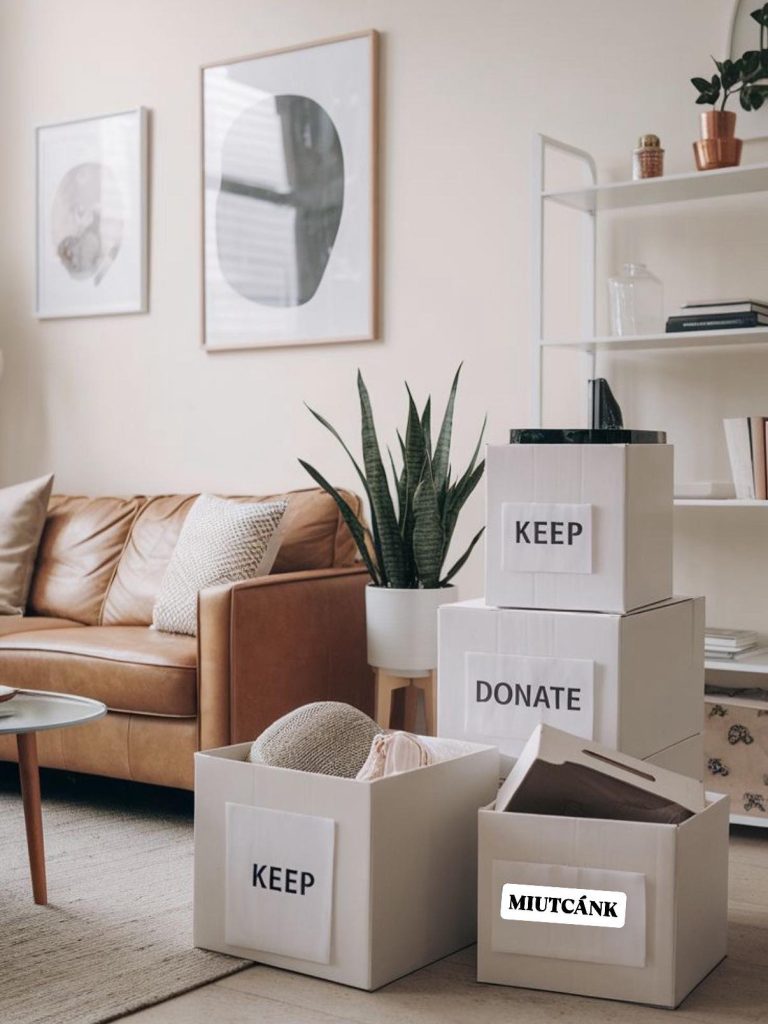
How do you see the future of the sharing economy, especially with the growing trend of people engaging less in person?
I think it’s going to be a very scary world. With the rise of artificial intelligence and surveillance, it feels unsettling. But the solution, in my opinion, is to strengthen human connections. In the sharing economy, we’re seeing a trend towards standardization, like with platforms such as Uber and Airbnb, where people expect consistency and predictability—like knowing the wattage of a drill they borrow. This is important for building trust.
But I think there are two directions. One is community-focused, where borrowing a drill is just an excuse for people to connect. The other is more transactional, where people just want a specific item quickly and cheaply. Both directions are exciting, but I believe the real value comes from in-person interaction. A generational shift may happen, but we’ve grown up meeting people face to face, and that’s a key element.
I think Miutcank may not reach 50% of a district, but for the 20% that do care, it will continue to grow. We’ve seen the idea of kiosks or machine-based exchanges, but that lacks the personal connection. Local stores could play a role in this, much like package pick-up points. However, we need to be mindful. In a world where we can get things instantly and cheaply, it’s easy to overdo it, like ordering cable ties every few days. The key is finding a balance between convenience and meaningful connection.
Interview with Gaspar Horvath and David Szabo by Levente Polyak and Sophie Bod
Dicover more articles on sharing initiatives:

